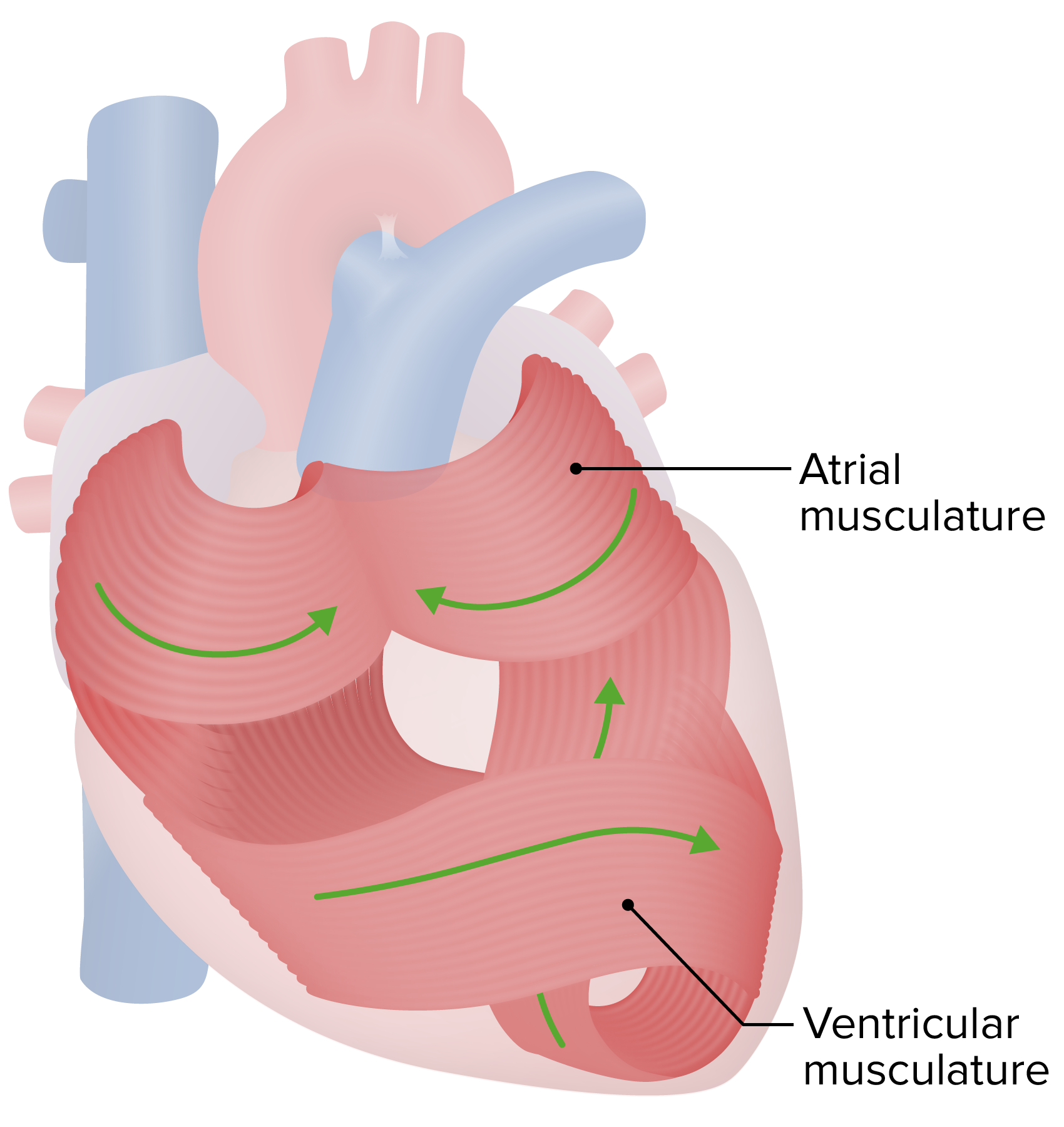Playlist
Show Playlist
Hide Playlist
Heart: Introduction
-
Slides 01 Human Organ Systems Meyer.pdf
-
Reference List Histology.pdf
-
Download Lecture Overview
00:02 In this lecture, you are going to learn about the histological structure of the heart. 00:09 Hopefully at the end of this lecture, you’ll have a very good understanding of what endothelium is. That you’ll understand the structure of the heart and how blood flows through the heart. And how the pumping of the heart is controlled by the impulse conducting system, and how Purkinje fibres are able to distribute impulses through the heart muscle. 00:38 It’s important that you understand the difference between Purkinje fibres which are normal cardiac muscle fibres but specialized for conduction, how to distinguish those fibres from cardiac muscle that specialize to pump, to contract, and move blood through the heart. It’s also important you understand the difference between the structure of cardiac muscle and smooth muscle and skeletal muscle. Now, it’s very, very important that you understand endothelium. 01:17 Endothelium has an enormous number of functions throughout the body. And each of these functions will be dealt with in more detail in other parts of the body systems. But endothelium forms a very thin lining of all the blood vessels in our body. It has a very important function of being a barrier, and only allowing certain substances to pass across the wall of this very, very small thin epithelial lining of all blood vessels. Of course, the heart is structured in such a way that it’s able to pump blood, first of all, to the lungs to be oxygenated, to then receive that blood back and pump that oxygenated blood to the rest of the body. So the structure of the heart is a very important concept structure to understand. It’s also very important to understand the sequence of blood flow through the heart because as I said a moment ago, the heart is structured in such a way that the sequence of blood flow through the heart is highly coordinated. And without that proper sequence of blood flow from the heart, then we would not have the ability to oxygenate our blood and to carry oxygenated blood to the rest of the body. First of all, let’s explain or let’s clearly understand what we mean by the term endothelium. 02:53 Endothelium is a very special name given to the epithelial lining throughout the cardiovascular system. 02:59 It’s the thin epithelium that is in contact with the lumen of the blood vessels and even the lumen of the heart, that consists of a very flattened squamous epithelial cell. 03:15 And they’re also very tightly bound to each other because one of the jobs of endothelium is to be a selective barrier for transport across the epithelial surface. But endothelial cells also have an enormous number of other functions. Some of those functions I’ve listed on the left-hand side of this slide. And I’ll refer to these functions in later lectures when I deal with their function in different organ systems.
About the Lecture
The lecture Heart: Introduction by Geoffrey Meyer, PhD is from the course Cardiovascular Histology.
Included Quiz Questions
Which of the following statements regarding vascular endothelium is INCORRECT?
- Vascular endothelial cells line the entire circulatory system, except the heart.
- It consists of a thin layer of simple squamous epithelium that lines the interior surface of blood vessels.
- The endothelium is of mesodermal origin.
- It is a very important selective barrier between the blood and the extravascular space.
- Both blood vessels and lymphatic capillaries are lined by a single layer of endothelial cells.
Which of the following statements regarding vascular endothelium is CORRECT?
- It affects the contraction and relaxation of smooth muscles in the tunica media.
- It prevents diffusion of all molecules.
- It is permeable to all cell types.
- It does not affect vascular resistance.
- It consists of cuboidal cells.
Customer reviews
3,0 of 5 stars
| 5 Stars |
|
2 |
| 4 Stars |
|
0 |
| 3 Stars |
|
0 |
| 2 Stars |
|
0 |
| 1 Star |
|
2 |
It is so slow that I can't focus. Also at the end of lecture functions of endothelium is written on the slide but not explained by the teacher. I think one should mention what is written on slide while doing a presentation.
It is really fascinating with the clarity that is expressed and the rhythm as it goes, if the proper attention and reason is given, the presentation is totally understandable
clear intro, to the point and simple to understand, very simple
This is very unclear and annoying, everything is everywhere and is hard to figure out what we need to do




